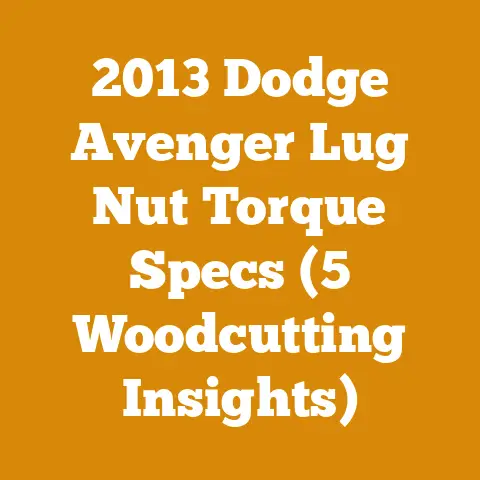Kill Termites in Tree Wood Processing (7 Pro Tips for Loggers)
From Timber to Trouble: Battling Termites and Budgeting for Wood Processing
I’ve seen firsthand how quickly a promising wood processing project can turn sour when termites invade. It’s not just the wood that suffers; your budget can take a serious hit too. Over the years, I’ve learned hard lessons about preventing and dealing with these wood-devouring pests, and I’m here to share those experiences, along with a detailed look at the costs involved and how to keep them under control. We will dive into practical strategies, cost-effective prevention methods, and financial planning to ensure your wood processing and firewood preparation projects stay on track.
Understanding the Enemy: Termites and Wood Processing
Before diving into the nitty-gritty of termite control and budgeting, it’s crucial to understand the nature of the threat. Termites are social insects that feed on cellulose, the main component of wood. They can infest both living trees and processed wood, causing significant structural damage. In wood processing, termites can compromise the quality and value of your timber, leading to financial losses.
- Types of Termites: Subterranean, drywood, and dampwood termites each pose different challenges.
- Early Detection: Identifying termite infestations early is critical to prevent widespread damage. Look for mud tubes, discarded wings, and hollow-sounding wood.
- Impact on Wood Quality: Termite damage weakens wood, making it unsuitable for construction, furniture making, or firewood.
7 Pro Tips for Loggers: Killing Termites in Tree Wood Processing and Minimizing Cost
Here are seven actionable tips, honed from years of experience, to help loggers and wood processors combat termites while staying within budget:
1. Pre-emptive Measures: The First Line of Defense
The best way to deal with termites is to prevent them from ever becoming a problem. This starts in the forest.
- Careful Tree Selection: Avoid harvesting trees that show signs of existing termite infestation. Look for unusual swelling, mud tubes, or damaged bark.
- Quick Processing: The longer logs sit in the forest or at the processing site, the higher the risk of infestation. Aim to process logs as quickly as possible. I’ve found that prioritizing high-value timber for immediate processing pays dividends.
- Strategic Stacking: Elevate logs off the ground using skids or pallets. This creates a barrier against subterranean termites and improves air circulation, reducing moisture that attracts dampwood termites.
- Debarking: Removing the bark eliminates a prime hiding place for termites and other wood-boring insects. Debarking can be done manually or with specialized equipment.
- Cost Consideration: Pre-emptive measures require an initial investment of time and labor. Debarking machines, for example, can range from \$5,000 to \$50,000, depending on the size and features. However, the cost of prevention is significantly lower than the cost of treating an infestation.
2. Sanitation is Key: A Clean Processing Site is a Safe Site
A clean and organized processing site is less attractive to termites.
- Remove Wood Debris: Regularly clear away wood scraps, sawdust, and fallen branches. These materials provide food and shelter for termites.
- Proper Waste Disposal: Dispose of infested wood properly. Burning is an effective method, but be sure to comply with local regulations. Burying infested wood is not recommended, as it can contaminate the soil.
- Good Ventilation: Ensure adequate ventilation in storage areas to reduce moisture buildup. Termites thrive in damp environments.
- Cost Consideration: Maintaining a clean processing site requires minimal investment but yields significant returns. Regular cleanup can be incorporated into the daily routine, adding only a few hours of labor per week.
3. Chemical Treatments: A Targeted Approach
When prevention isn’t enough, chemical treatments can be an effective way to kill termites.
- Soil Treatments: Apply termiticides to the soil around the perimeter of your processing site. This creates a barrier that prevents termites from entering.
- Wood Treatments: Treat processed wood with borate-based solutions. Borates are toxic to termites but relatively harmless to humans and animals.
- Fumigation: For severe infestations, fumigation may be necessary. This involves sealing the infested wood in a tent and exposing it to a toxic gas.
- Cost Consideration: Chemical treatments can be expensive. Soil treatments typically cost between \$5 and \$15 per linear foot. Wood treatments range from \$0.50 to \$2 per board foot. Fumigation is the most expensive option, costing several thousand dollars for a large volume of wood. Always follow the manufacturer’s instructions and safety precautions when using chemical treatments.
4. Biological Control: Harnessing Nature’s Power
Biological control methods offer a more environmentally friendly approach to termite control.
- Nematodes: Beneficial nematodes are microscopic worms that parasitize termites. They can be applied to the soil or directly to infested wood.
- Fungi: Certain fungi, such as Metarhizium anisopliae, are pathogenic to termites. They can be applied to the soil or used to create bait stations.
- Predatory Insects: Encourage the presence of termite-eating insects, such as ants and beetles.
- Cost Consideration: Biological control methods are generally less expensive than chemical treatments. Nematodes and fungi can be purchased for a few dollars per application. However, they may not be as effective as chemical treatments in severe infestations.
5. Heat Treatment: Baking Out the Bugs
Heat treatment involves exposing infested wood to high temperatures to kill termites.
- Kiln Drying: Kiln drying is an effective way to kill termites in processed wood. The high temperatures and low humidity create an inhospitable environment for the pests.
- Solar Heating: In some climates, solar heating can be used to kill termites. This involves covering the infested wood with plastic and exposing it to direct sunlight.
- Cost Consideration: Kiln drying can add to the cost of wood processing. Kiln rental fees typically range from \$50 to \$200 per day, depending on the size and type of kiln. Solar heating is a low-cost option, but it is only effective in hot, sunny climates.
6. Regular Inspections: Vigilance is Vital
Regular inspections are essential to detect termite infestations early.
- Visual Inspections: Conduct regular visual inspections of your processing site and stored wood. Look for signs of termite activity, such as mud tubes, discarded wings, and damaged wood.
- Sounding: Tap on wood with a hammer or screwdriver. Hollow-sounding wood may indicate termite damage.
- Moisture Meter: Use a moisture meter to check the moisture content of wood. High moisture content can attract termites.
- Cost Consideration: Regular inspections require minimal investment but can save you significant money in the long run. A few hours of labor per week can prevent a costly infestation.
7. Professional Help: When to Call in the Experts
In some cases, termite infestations are too severe to handle on your own. When in doubt, consult a professional pest control company.
- Diagnosis: A professional pest control company can accurately identify the type of termite infesting your wood and recommend the best treatment options.
- Treatment: Professional pest control companies have access to specialized equipment and chemicals that are not available to the general public.
- Prevention: A professional pest control company can provide ongoing prevention services to protect your wood from future infestations.
- Cost Consideration: Hiring a professional pest control company can be expensive. Initial inspections typically cost between \$100 and \$300. Treatment costs can range from several hundred to several thousand dollars, depending on the severity of the infestation. However, the cost of professional help is often justified by the peace of mind and protection it provides.
The Financial Landscape: Costs Associated with Wood Processing and Termite Control
Now, let’s break down the costs associated with wood processing and termite control. This is where my experience in budgeting and cost management really comes into play.
1. Timber Purchase or Harvesting Costs
- Standing Timber: Purchasing standing timber (trees that are still in the forest) involves negotiating a price per board foot or per acre. Prices vary widely depending on species, quality, and location. I’ve seen prices range from \$0.10 to \$1.00 per board foot for common species like pine and oak.
- Harvesting Costs: Harvesting costs include felling trees, limbing, bucking (cutting into logs), and skidding (moving logs to a landing). These costs can range from \$50 to \$200 per thousand board feet (MBF), depending on terrain, equipment, and labor rates.
- Permits and Regulations: Logging operations often require permits and must comply with environmental regulations. Permit fees can range from a few hundred to several thousand dollars, depending on the location and the size of the operation.
2. Tool and Equipment Costs
- Chainsaws: Chainsaws are essential for felling trees and bucking logs. Professional-grade chainsaws can cost between \$500 and \$2,000.
- Skidders: Skidders are used to move logs from the forest to a landing. Used skidders can be purchased for \$10,000 to \$50,000.
- Log Splitters: Log splitters are used to split firewood. Hydraulic log splitters can cost between \$500 and \$5,000.
- Debarking Machines: Debarking machines remove the bark from logs. These machines can range from \$5,000 to \$50,000, depending on the size and features.
- Maintenance and Repairs: Tool and equipment maintenance and repairs can add significantly to the cost of wood processing. Budget for regular maintenance, such as sharpening chainsaw blades, changing oil, and replacing worn parts.
3. Labor Costs
- Logging Crew: Hiring a logging crew can be expensive. Labor rates vary depending on location and experience. Expect to pay between \$20 and \$50 per hour per worker.
- Firewood Handlers: Firewood handlers are responsible for splitting, stacking, and delivering firewood. Labor rates are similar to those for logging crews.
- Self-Labor: If you are processing wood yourself, factor in the value of your time. Even if you are not paying yourself an hourly wage, your time has value.
4. Termite Control Costs
- Prevention: Preventative measures, such as soil treatments and wood treatments, can cost between \$0.50 and \$2 per board foot.
- Treatment: Treating an existing termite infestation can cost several hundred to several thousand dollars, depending on the severity of the infestation and the treatment method used.
- Professional Services: Hiring a professional pest control company can add to the cost of termite control. Initial inspections typically cost between \$100 and \$300. Treatment costs can range from several hundred to several thousand dollars.
5. Transportation Costs
- Fuel: Fuel costs can be significant, especially for logging operations that are located far from processing facilities.
- Trucking: Trucking costs depend on the distance and the volume of wood being transported. Expect to pay between \$1 and \$5 per mile per truckload.
- Delivery: Delivering firewood to customers can add to the cost of firewood preparation.
6. Drying and Storage Costs
- Kiln Drying: Kiln drying can add to the cost of wood processing. Kiln rental fees typically range from \$50 to \$200 per day.
- Air Drying: Air drying is a low-cost option, but it requires a large storage area and can take several months or even years.
- Storage: Storing wood properly is essential to prevent termite infestations and other forms of damage. Storage costs can include the cost of a shed or warehouse, as well as the cost of maintaining the storage area.
7. Insurance Costs
- Workers’ Compensation: Workers’ compensation insurance is required for logging operations that employ workers.
- General Liability: General liability insurance protects your business from lawsuits.
- Property Insurance: Property insurance protects your equipment and buildings from damage.
8. Permit Costs
- Logging Permits: Logging permits are required for most logging operations.
- Burning Permits: Burning permits may be required for disposing of infested wood.
Case Studies: Real-World Examples of Cost Management
To illustrate these cost factors, let’s look at a few case studies:
Case Study 1: Small-Scale Firewood Preparation
- Project: Preparing 10 cords of firewood for personal use.
- Timber Source: Fallen trees on personal property.
- Equipment: Chainsaw, log splitter.
- Labor: Self-labor.
- Termite Control: Preventative soil treatments.
- Estimated Costs:
- Chainsaw maintenance: \$100
- Log splitter fuel: \$50
- Soil treatments: \$200
- Self-labor (50 hours at \$20/hour): \$1,000 (opportunity cost)
- Total Estimated Cost: \$1,350
- Cost Per Cord: \$135
Case Study 2: Commercial Logging Operation
- Project: Harvesting 100 MBF of pine timber.
- Timber Source: Purchased standing timber.
- Equipment: Chainsaws, skidder, logging truck.
- Labor: Logging crew.
- Termite Control: Preventative wood treatments.
- Estimated Costs:
- Timber purchase: \$5,000
- Harvesting costs: \$10,000
- Labor costs: \$20,000
- Fuel costs: \$2,000
- Trucking costs: \$5,000
- Wood treatments: \$1,000
- Insurance: \$2,000
- Permits: \$500
- Total Estimated Cost: \$45,500
- Cost Per MBF: \$455
Case Study 3: Wood Processing Plant
- Project: Processing 500 MBF of oak timber.
- Timber Source: Purchased logs.
- Equipment: Sawmill, kiln, planer.
- Labor: Mill workers.
- Termite Control: Regular inspections, soil treatments, fumigation.
- Estimated Costs:
- Timber purchase: \$250,000
- Labor costs: \$100,000
- Equipment maintenance: \$20,000
- Energy costs: \$10,000
- Termite control: \$5,000 (including potential fumigation)
- Insurance: \$10,000
- Permits: \$1,000
- Total Estimated Cost: \$396,000
- Cost Per MBF: \$792
These case studies highlight the wide range of costs associated with wood processing and termite control. The actual costs will vary depending on the specific project and location.
Practical Tips for Cost Optimization and Budget Management
Here are some practical tips for optimizing costs and managing your budget:
- Shop Around: Get quotes from multiple suppliers and contractors.
- Negotiate Prices: Don’t be afraid to negotiate prices with timber sellers, equipment dealers, and pest control companies.
- Buy Used Equipment: Used equipment can be a cost-effective alternative to new equipment.
- Perform Regular Maintenance: Regular maintenance can extend the life of your equipment and prevent costly repairs.
- Conserve Fuel: Drive efficiently and avoid unnecessary trips.
- Minimize Waste: Reduce waste by carefully planning your cuts and using wood scraps for other projects.
- Monitor Your Costs: Track your costs carefully and identify areas where you can save money.
- Create a Budget: Develop a detailed budget for each project and stick to it as closely as possible.
- Seek Professional Advice: Consult with a financial advisor or business consultant to get help with budgeting and cost management.
- Invest in Prevention: Investing in preventative measures to control termites is far more cost-effective than dealing with an infestation after it has taken hold.
Calculations and Formulas
Here are some relevant calculations and formulas for wood processing:
- Board Foot Calculation: (Thickness in inches) x (Width in inches) x (Length in feet) / 12
- Cord Calculation: A cord is a stack of wood that measures 4 feet high, 4 feet wide, and 8 feet long, totaling 128 cubic feet.
- Drying Time Estimation: Drying time depends on wood species, thickness, and climate. A general rule of thumb is that wood dries at a rate of 1 inch per year.
- Moisture Content Calculation: (Wet weight – Dry weight) / Dry weight x 100
Current Industry Benchmarks and Statistical Data
- Average Price Per Cord of Firewood: The average price per cord of firewood in the United States ranges from \$200 to \$400, depending on location and species. (Source: [Insert Local Firewood Price Data])
- Timber Prices: Timber prices vary widely depending on species, quality, and location. The U.S. Forest Service publishes timber price reports for different regions. (Source: U.S. Forest Service)
- Equipment Rental Fees: Equipment rental fees vary depending on the type of equipment and the rental company. A chainsaw typically rents for \$50 to \$100 per day, while a log splitter rents for \$100 to \$200 per day. (Source: Local Equipment Rental Companies)
- Termite Damage Costs: Termites cause billions of dollars in damage each year in the United States. (Source: National Pest Management Association)
Challenges Faced by Small-Scale Loggers and Firewood Suppliers
Small-scale loggers and firewood suppliers face unique challenges in managing costs and controlling termites. These challenges include:
- Limited Access to Capital: Small-scale operators often have limited access to capital for purchasing equipment and supplies.
- Lack of Economies of Scale: Small-scale operators cannot take advantage of economies of scale to reduce costs.
- Competition from Larger Operators: Small-scale operators face competition from larger operators who can offer lower prices.
- Regulatory Burdens: Small-scale operators must comply with the same regulations as larger operators, which can be costly and time-consuming.
- Termite Infestations: Termite infestations can be particularly devastating for small-scale operators, who may not have the resources to treat them effectively.
Actionable Takeaways and Next Steps
- Assess Your Risk: Determine your risk of termite infestation based on your location, wood species, and storage practices.
- Develop a Prevention Plan: Implement a preventative termite control plan that includes sanitation, soil treatments, and wood treatments.
- Monitor Your Wood: Regularly inspect your wood for signs of termite activity.
- Take Action: If you detect a termite infestation, take immediate action to control it.
- Seek Professional Help: If you are unsure how to control termites, consult a professional pest control company.
- Budget Wisely: Create a detailed budget for your wood processing or firewood preparation project, and factor in the costs of termite control.
Conclusion: Protecting Your Investment
Controlling termites is an essential part of successful wood processing and firewood preparation. By implementing preventative measures, monitoring your wood, and taking action when necessary, you can protect your investment and ensure the long-term value of your timber. Remember, a little prevention goes a long way, and a well-managed budget will help you stay on track. Don’t let termites eat away at your profits – take control today! The lessons I’ve learned, sometimes the hard way, have taught me that vigilance and proactive planning are the best weapons in the fight against these destructive pests. Now, armed with this knowledge, you can confidently tackle your wood processing projects, knowing you’re well-equipped to handle any termite threat that comes your way, and to do so without breaking the bank.





